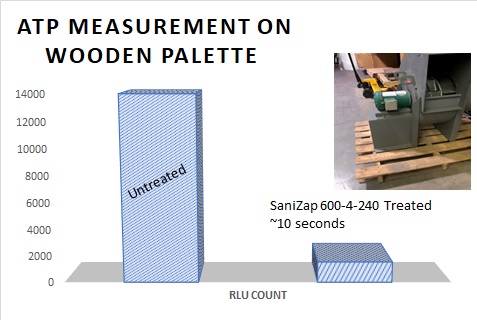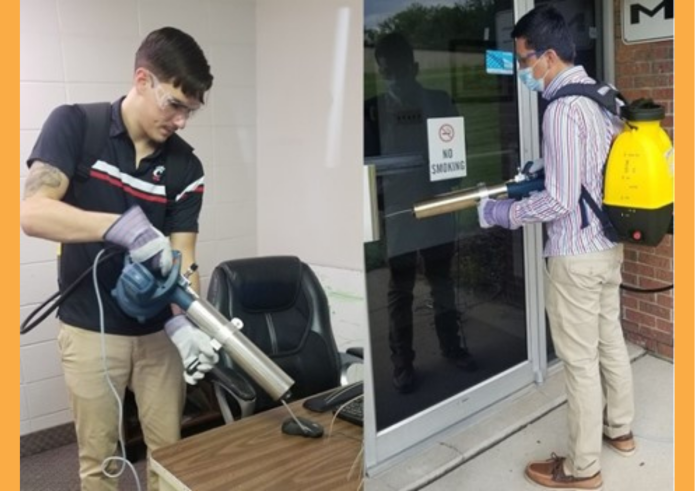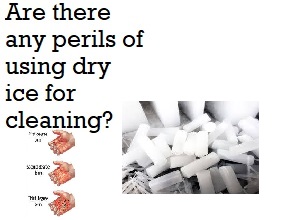Destroying PFAS with temperature.
High-temperature steam and steam plasma are available today. See for example here.
Destroying PFAS with temperature is possible. Reports place the temperature at between 500C and 1000C.
High-temperature steam and steam plasma are available today. See for example here.
Destroying PFAS with temperature is possible. Reports place the temperature at between 500C and 1000C.
SaniZap machines and high-temperature steam above its inversion temperature can be used for sterilization provided the correct residence time and temperature are employed.
What is sanitation, and disinfection, and how do they compare with sterilization?
Influence of Superheated Steam Temperature and Moisture Exchange on the Inactivation of Geobacillus stearothermophilus Spores in Wheat Flour‑Coated Surfaces by Park et. al..
Food and Bioprocess Technology, Springer, 2022
https://doi.org/10.1007/s11947-022-02830-3
Abstract
Sanitation in dry food processing environments is a major challenge for the industry. The influence of superheated steam
(SH) temperatures (125 to 250 °C) on the inactivation of spores on selected coupon surfaces (stainless steel, rubber, and
concrete) coated with wheat flour as a model food soil residue was investigated using a bench scale superheating apparatus.
Wheat flour inoculated with Geobacillus stearothermophilus (7.62 ± 0.12 log CFU/g) coated on the coupon surfaces served
as the model food residue. Among the surfaces tested, temperature of concrete increased faster [time constant (τ) < 89.0
s] than that of stainless steel (τ < 173.6 s). As a consequence, wheat flour coated on concrete dehydrated faster [moisture
diffusivity (Dm) > 1.17 × 10−4 mm2/s] than those on the stainless steel (Dm > 0.76 × 10−4 mm2/s). Hence, Geobacillus
stearothermophilus spores suspended on stainless steel were inactivated faster than that of concrete and rubber (p < 0.05).
The time required for a 5-log reduction at 250 °C were 180s and 240s, on stainless steel and concrete surfaces, respectively.
A mathematical model that considered surface temperature, food residue moisture content, and SH inversion temperature
adequately described spore inactivation during SH treatment.

It is estimated that In the United States, about 1 in every 25 patients contracts a healthcare-associated nosocomial infection, leading to almost 100,000 deaths per year. (Example of source: https://www.osmosis.org/answers/nosocomial-infection) One can Google for more articles.

This is similar to saying we should not wash our hands or we should reduce hygiene. We think the problem has more to do with the excessive use of toxic chemicals (yes, chemicals in concentrations are toxic). We do not recommend UV Ultra-Violet because the damage effects of UV on human tissues and cells are cumulative.
We recommend steam. Why Steam?
Can biofilms be eliminated with steam – a bit of antimicrobial trivia included?
Why are the SaniZap® Generators more Efficient than Boiler type of Steam Generators?
Compare Energy Savings with Rapid Steam Techniques to remove grime and dirt.
The History of Hygiene and Sanitation
HealthySurface® is a service in which surfaces are restored to, and maintained at, an original condition utilizing treatment provided by the superheated steam process and apparatus of SaniZap®. HealthySurface® provides the removal of foreign substances from objects and surfaces to initial conditions including cleanliness, texture, or scent. Cleanliness, as used here, may be defined as the removal of any content not initially present on a surface. Mighty steam is low oxygen above common inversion temperatures. A treatment provided by HealthySurface® will remove or reduce microbes when employed properly . However, repeated applications or other sanitation processes could be necessary to maintain these conditions on a more permanent basis. How long a microbe can live on a surface often depends on the microbe. There is no hard-and-fast rule for how long a virus can survive outside of a host (some published information is given below – see also news). The type of surface and environmental temperature and humidity all come into play. Deep-cleaning with SaniZap® is recommended particularly for reaching vegetative bacteria.
Please read below for reported information on virus residence on surfaces. Please note that technical and microbiological information is constantly evolving. Bayzi Corporation will continue to add to news as more information becomes commonly available.
Where do viruses and other microbes hide on surfaces


Source What Are The Dirtiest Areas Of Our Cars? | Scrap Car Comparison

Over the past four weeks, Omicron has risen rapidly in estimates, accounting for:

December 4, 2020
A brand new SaniZap-4-600 was delivered to The Ohio State University Food Department to conduct major research sponsored by the USDA for deep cleaning of food and food related surfaces.

Here is what we found in the literature:
Exposure to CO2 can produce a variety of health effects. These may include headaches, dizziness, restlessness, a tingling or pins or needles feeling, difficulty breathing, sweating, tiredness, increased heart rate, elevated blood pressure, coma, asphyxia, and convulsions.
As dry ice melts, it turns into carbon dioxide gas (a process known as “sublimation”) – this is always present in low concentrations in the environment so unless one uses a large amount it may not contribute that extensively to the greenhouse effect. But it all adds up. Dry ice is solid carbon dioxide. It forms at a temperature of -78.5 °C (-109°F). At room temperature, dry ice transitions rapidly from its solid to its gaseous state. However, it can pose a problem when it is released in a small or unventilated space, as it lowers the amount of “normal air” in the area. This in turn creates an oxygen deficient environment which can pose the following health risks to both humans and animals:
As carbon dioxide gas is both colorless and odorless, it cannot be detected unless a specific alarm sensor is in situ – so if dry ice melts in uncontrolled conditions and in an unventilated space, anyone or any animal in the immediate area could be at real risk to their health. If the oxygen in the area reduces to any less than 10%, unconsciousness without warning is a real risk. Once this has happened, the individual may then suffer convulsions and eventually these conditions will be fatal if no help comes. https://www.health.ny.gov/publications/7081/
The levels of CO2 in the air and potential health problems are: (https://www.dhs.wisconsin.gov/chemical/carbondioxide.htm)
Did you know a lot of energy goes into making dry ice?
Prolonged exposure to dry ice can cause severe skin damage through frostbite, and the fog produced may also hinder attempts to withdraw from contact in a safe manner. (https://en.wikipedia.org/wiki/Dry_ice)
Dry ice: carbon dioxide poisoning is possible (https://www.eurekalert.org/news-releases/674889)